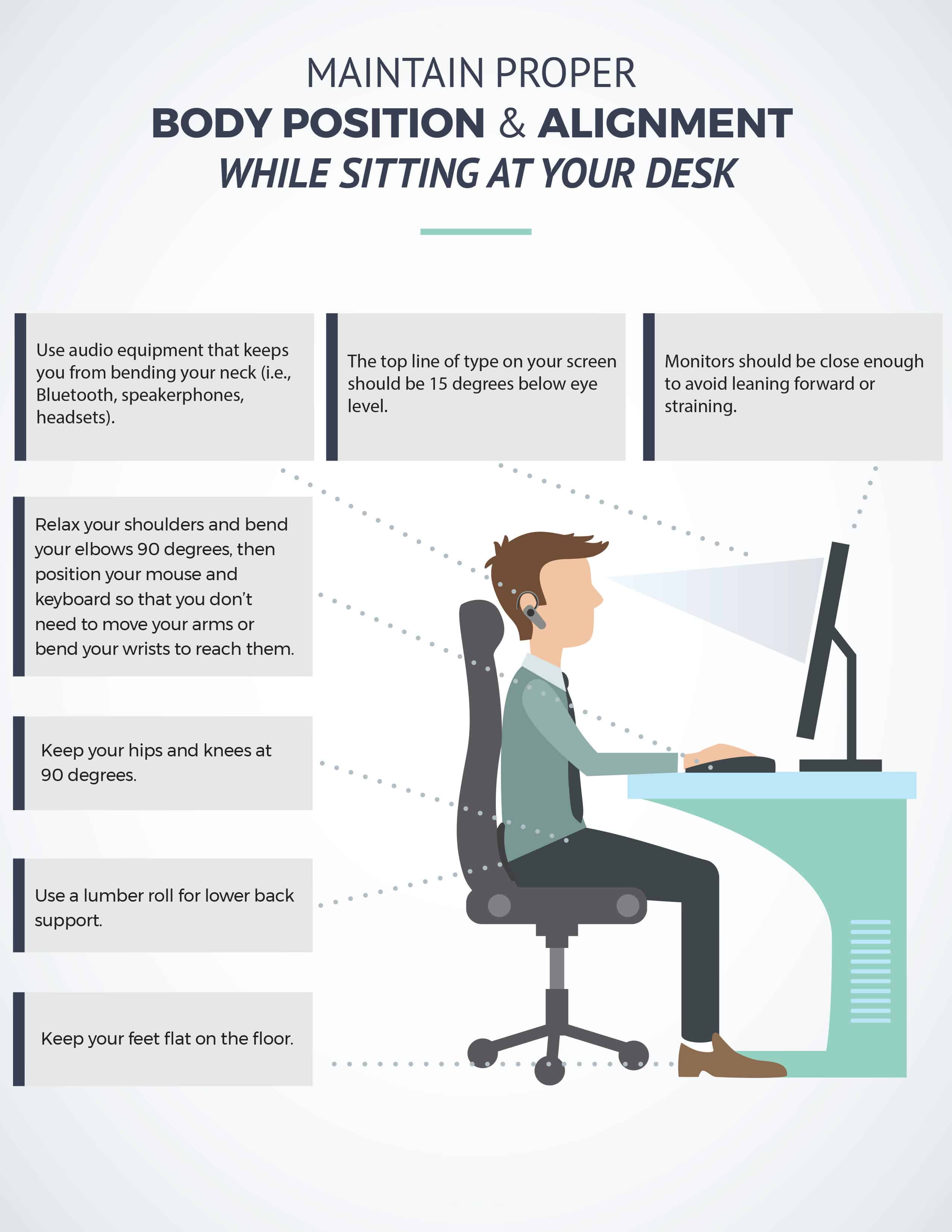Inactivity is the biggest threat to workstation users. To stay active, take a 20-second break every 20 minutes: Micro-activities include standing, brisk walking, moving your head in a “plus sign” fashion, or stretching with one of the following exercises. (See also PDF attached)
CERVICAL RETRACTIONS: Sit or stand looking forward with good posture. Tuck your chin to create a double chin. Hold this position for 3-5 seconds. Return to the starting position. Focus your vision on a spot on the wall to avoid neck flexion or extension. To progress, place a finger on your chin, and apply backwards pressure at end range. Imagine that your head is on drawer slides. Keep your mouth closed. Perform 1 set of 10 repetitions 3-10 times per day. Alternately, this exercise may be performed standing with your back against a wall. Your buttocks and shoulder blades should be in contact with the wall. Tuck your chin to make a “double chin” until the base of your skull contacts the wall, relax and repeat as directed.
LEVATOR STRETCH: While sitting, grasp the seat of your chair with your left hand. Rotate your head toward the right and look downward toward the floor. Place your right hand over the top of your head and gently pull down and diagonally in the direction you are looking. Against the resistance of your hand, contract your neck in an attempt to push your head backward/diagonally from the direction you are looking for seven seconds. Relax and gently pull your head further toward the floor to increase the stretch. Lock into this new position, and make sure that you continue to keep your head rotated in the direction that you are pulling. Perform three contract/relax cycles on each side twice per day or as directed.
BRUGGER RELIEF POSITION: Position your body at the edge of a chair, feet pointed outward. Your weight should be on your legs and your abdomen should be relaxed. Tilt your pelvis forward, lift your sternum, arch your back, tuck your chin and drop your arms. Move your hands apart from each other while simultaneously rotating your palms out, straightening your arms, and pinching your shoulder blades together as your hands backward. Take a few deep, cleansing breaths. Hold this stretch for several seconds, return to the start position and repeat 3-6 times, twice per day or as directed. Alternately, this exercise may be performed standing.
YTWL SCAPULAR DEPRESSION: Stand with your straight arms raised above your head in a “Y” position. Squeeze your shoulder blades together and downward throughout the following sequence of movements. Lower your straightened arms to shoulder level, into a “T” position. Next bend your elbows so that your fingers are pointing straight up while slightly lowering your elbows to make a “W”. Finally, while keeping your elbows bent 90 degrees, lower your arms to your sides so that your elbows are touching your ribs to form an “L” on each side and squeeze. Hold each position for 1-2 seconds and repeat 3 sets of 10 repetitions, twice per day or as directed.
A 2018 study of computer workstation users found:
- 44.7% suffered from various musculoskeletal problems
- 46% suffered from headache
- 41.3% suffered from neck pain
- 16% suffered from wrist pain

